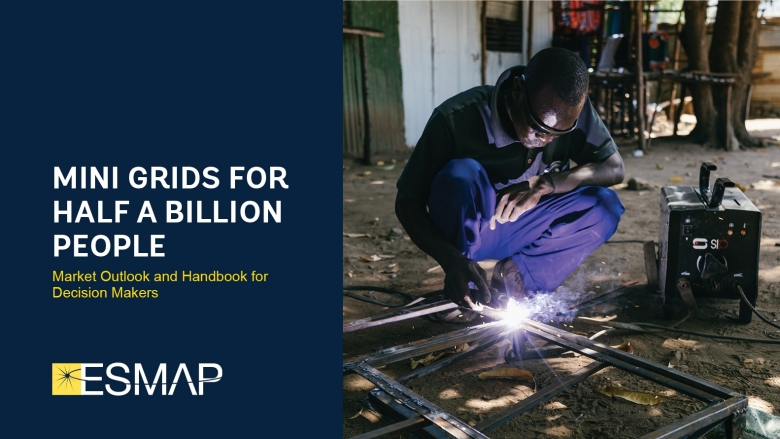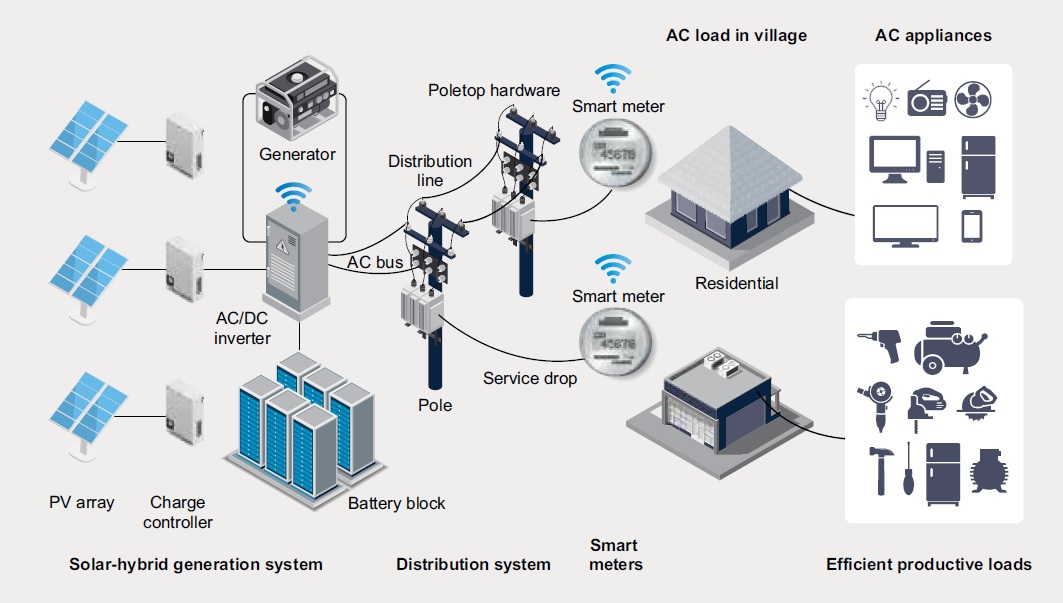
Mini-grids could power 500 million people, says World Bank report
According to a new World Bank report, by 2030 at the latest, mini-grids, previously considered a solution for specific needs, will be able to supply 500 million people with electricity and thus help bridge the energy gap.
Due to a combination of factors such as falling costs, significant increases in quality of service and a favourable policy environment, this has become an option that can be expanded to complement grid extension and solar home systems.
Mini Grids for Half a Billion People: Market Outlook and Handbook for Decision Makers is the most comprehensive study on mini-grids to date. It provides policy makers, investors and real estate developers with ideas on how mini-grids can be scaled up. It assesses the global market and industry, analyses costs and technological innovations, and demonstrates the importance of microfinance and the cost-effective use of electricity.
Compared to main grid and solar home systems, mini-grids are a more viable solution for areas with high population density and medium electricity demand. Generally, the costs of extending the main grid to serve remote communities are extremely high. Worldwide, around 19,000 mini-grids have already been installed in 134 countries, representing a total investment of USD 28 billion and providing electricity to some 47 million people. Most of the mini-grids are in Asia, while the largest proportion of planned installations are in Africa.
Today, total investment in mini-grids in countries with little access to electricity in Africa and Asia amounts to USD 5 billion. An estimated USD 220 billion is needed to connect 500 million people to 210,000 mini-grids in these regions by 2030. Countries around the world need to actively mobilise private investment, for example by establishing policies that support comprehensive electrification programmes, promoting viable business models and providing public funds such as performance-based subsidies.
"At the moment, mini-grids are one of the main solutions for bridging the energy gap. We believe that the development of mini-grids at scale has great potential and we are working with countries to actively mobilise public and private investments," said Riccardo Puliti, Senior Director for Energy and Extractives at the World Bank. "The World Bank has stepped up its support for mini-grids while helping countries develop comprehensive electrification programmes. Our commitments to mini-grids represent about a quarter of total public and private sector investment in our client countries. The Bank's portfolio consists of 37 mini-grid projects in 33 countries, with a total commitment of more than USD 660 million. This investment is expected to mobilise a further USD 1.1 billion in co-financing.

Characteristics of a third generation mini-grid system. Image from the World Bank report
In addition to being cost-effective, mini-grids bring many other benefits, such as positive environmental impacts: 210,000 mini-grids using solar energy would help avoid 1.5 billion tonnes of carbon dioxide emissions worldwide. In addition, they offer national utilities a win-win solution for the sector, paving the way for future grid roll-out in a more economically viable way. By the time the main grid arrives, there will already be significant demand for electricity and customers will be more able to pay for the service through the productive uses they have generated with the mini-grids.
Source: World Bank




